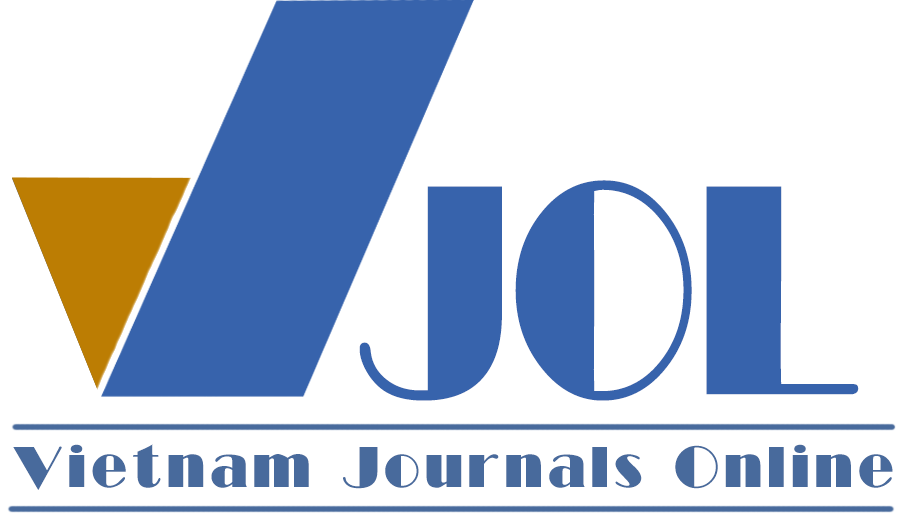The relationship between work environment and employees’ innovative work behaviours: A proposed model
Authors
DOI: https://doi.org/10.57110/vnu-jeb.v4i2.268Keywords:
Innovation, work environment, IWB, AET, PEFReferences
Abioye, S. O., Oyedele, L. O., Akanbi, L., Ajayi, A., Delgado, J., Bilal, M., Akinade, O., Ahmed, A. (2021). Artificial intelligence in the construction industry: A review of present status, opportunities and future challenges. Journal of Building Engineering, 44, 103299. https://doi.org/10.1016/j.jobe.2021.103299
Afsar, B. (2016). The impact of person-organization fit on innovative work behavior: The mediating effect of knowledge sharing behavior. International Journal of Health, 29(2), 104-122. https://doi.org/10.1108/IJHCQA-01-2015-0017
Afsar, B., Badir, Y., & Khan, M. M. (2015). Person–job fit, person–organization fit and innovative work behavior: The mediating role of innovation trust. Journal of High Technology Management Research, 26(2), 105–116. https://doi.org/10.1016/j.hitech.2015.09.001
Alpkan, L., Bulut, C., Gunday, G., Ulusoy, G., & Kilic, K. (2010). Organizational support for intrapreneurship and its interaction with human capital to enhance innovative performance. Management Decision, 48(5-6), 732-755. https://doi.org/10.1108/00251741011043902
Amabile, T. M. (2013). Componential theory of creativity. In E. H. Kessler (Ed.), Encyclopedia of management theory, 1, 134–139. Sage Publications.
Amabile, T. M., Conti, R., Coon, H., Lazenby, J., & Herron, M. (1996). Assessing the work environment for creativity. Academy of Management Journal, 39(5), 1154-1184. https://doi.org/10.5465/256995
Anderson, N. R., & West, M. A. (1998). Measuring climate for work group innovation: Development and validation of the team climate inventory. Journal of Organizational Behaviour, 19(3), 235-258. https://doi.org/10.1002/(SICI)1099-1379(199805)19:3<235::AID-JOB837>3.0.CO;2-C
Ashkanasy, Ayoko, O. B., & Jehn, K. A. (2014). Understanding the physical environment of work and employee behavior: An affective events perspective. Journal of Organizational Behavior, 35(8), 1169–1184. https://doi.org/10.1002/job.1973
Baregheh, A., Rowley, J., & Sambrook, S. (2009). Towards a multidisciplinary definition of innovation. Management Decision, 47 (8), 1323-1339. https://doi.org/10.1108/00251740910984578
Bilal, D., Ahmad, N., & Hassan, Z. (2020). The influence of knowledge management and work environment on employee innovative work behavior. Journal of Knowledge Management, 24(6), 1451-1474.
Blomberg, A. J., & Kallio, T. J. (2022). A review of the physical context of creativity: A three-dimensional framework for investigating the physical context of creativity. International Journal of Management Reviews, 24(3), 433–451. https://doi.org/10.1111/ijmr.12286
Cheah, S., & Ho, Y. P. (2019). Coworking and sustainable business model innovation in young firms. Sustainability, 11(10), 1-18. https://doi.org/10.3390/su11102959
Creswell, J. W., & Creswell, J. D. (2018). Research design: Qualitative, quantitative, and mixed methods approaches (5th ed.). Sage Publications.
Dul, J., & Ceylan, C. (2014). The impact of a creativity-supporting work environment on a firm’s product innovation performance. Journal of product development and management, 31(6), 254-267. https://doi.org/10.1111/jpim.12149
Ekvall, G. (1996). Organizational climate for creativity and innovation. European Journal of Work and Organizational Psychology, 5(1), 105–123. https://doi.org/10.1080/13594329608414845
Elsback, K. D., & Stigliani, I. (2018). Design thinking and organizational culture: A review and framework for future research. Journal of Management, 44(6), 1-33. https://doi.org/10.1177/0149206317744252
Emiralioglu, R., & Sonmez, B. (2021). The relationship of nursing work environment and innovation support with nurses’ innovative behaviours and outputs. Journal of Nursing Management, 29(7), 2132–2141. https://doi.org/10.1111/jonm.13354
Grošelj, A., Vukadinović, K., & Taylor, P. J. (2021). Does open innovation crowd out employees' innovative work behavior? Exploring the moderating role of organizational support for innovation. Technological Forecasting and Social Change, 169, 120710.
Hull, C. E., Tang, Z., Tang, J., & Yang, J. (2020). Information diversity and innovation for born-globals. Asia Pacific Journal of Management, 37(4), 1039–1060. https://doi.org/10.1007/s10490-019-09651-7
Kamarulzaman, N., Saleh, A. A., Hashim, S. Z., Hashim, H., & Abdul-Ghani, A. A. (2011). An overview of the influence of physical office environments towards employees. Procedia Engineering, 20 (2011), 262–268. https://doi.org/10.1016/j.proeng.2011.11.164
Lee, J. (2008). Effects of leadership and leader-member exchange on innovativeness. Journal of Managerial Psychology, 23(6), 670-687. https://doi.org/10.1108/02683940810894747
Lizarelli, F. L., Toledo, J. C. de, Gambi, L. D. N., & Gonçalves, C. L. (2023). Continuous improvement behaviors and impacts on innovation. TQM Journal, 35(2), 366–388. https://doi.org/10.1108/TQM-07-2021-0205
Moultrie, J., Nilsson, M., Dissel, M., Haner, U. E., Janssen, S., & Lugt, R. V. (2007). Innovation spaces: Towards a framework for understanding the role of the physical environment in innovation. Innovation Spaces, 16(1), 53-65. https://doi.org/10.1111/j.1467-8691.2007.00419.x
Nguyen, N. Q., Nham, P. T., Cao, T. O., Tran, T. T. H., Phung, T. V., & Pham, V. T. (2023). Innovation Management. Vietnam National University Press.
Nham, P. T., Nguyen, T. T. M., Khuat, T. N., Nguyen, B. H., Nguyen, T. T. H., & Nguyen, A. H. (2021). Sharing Knowledge and Innovation in Vietnamese Businesses. Vietnam National University Press.
O’Toole, K. M. (2001). Learning through the physical environment in the workplace. International Education Journal, 2(1), 10-19.
Oksanen, K., & Stahle, P. (2013). Physical environment as a source for innovation: Investigating the attributes of innovative space. Journal of Knowledge Management, 17(6), 815–827. https://doi.org/10.1108/JKM-04-2013-0136
Peng, L., & Jia, R. (2023). Exploring the interplay of the physical environment and organizational climate in innovation. Sustainability, 15(20), 15013. https://doi.org/10.3390/su152015013
Pham, N. M. (2014). Innovation in business. Vietnam Journals Online, 4, 12-15.
Phung, X. N., & Le, Q. (2013). Innovation in Vietnamese businesses. VNU Journal of Science, 29(4), 1-11.
Rozman, R., & Kovac, J. (2015). Individual and organisational creativity and innovation: Their management. Dynamic Relationships Management Journal, 4(2), 39-50. https://doi.org/10.17708/DRMJ.2015.v04n02a03
Saunders, M., Thornhill, A., & Lewis, P. (2021). Research methods for business students (8th ed.). Pearson Education Limited.
Scott, S. G., & Bruce, R. A. (1994). Determinants of innovative behavior: A path model of individual innovation in the workplace. Academy of Management Journal, 37(3), 580–607. https://psycnet.apa.org/doi/10.2307/256701
Siegel, S. M., & Kaemmerer, W. F. (1978). Measuring the perceived support for innovation in organizations. Journal of Applied Psychology, 63, 553–562. https://doi.org/10.1037/0021-9010.63.5.553
Strobl, A., Matzler, K., Nketia, B. A. & Veider, V. (2018). Individual innovation behavior and firm‑level exploration and exploitation: How family firms make the most of their managers. Review of Managerial Science, 14(4), 809-844.
Standing, C., Jackson, D., Larsen, A., Suseno, Y., Fulford, E., & Gengatharen, D. (2016). Enhancing individual innovation in organisations: A review of the literature. International Journal of Innovation and Learning. 19(1), 44-62. https://doi.org/10.1504/IJIL.2016.073288
Tomi, J. K., Kallio, K. M., & Blomberg, A. J. (2015). Physical space, culture and organisational creativity – a longitudinal study. Facilities, 33(5/6), 389-411. https://doi.org/10.1108/F-09-2013-0074
Weiss, H. M., & Cropanzano, R. (1996). Affective events theory: A theoretical discussion of the structure, causes and consequences of affective experiences at work. Research in Organizational Behavior, 18, 1-74.
Zhang, X., & Bartol, K. M. (2010). Linking empowering leadership and employee creativity: The influence of psychological empowerment, intrinsic motivation, and creative process engagement. The Academy of Management Journal, 53(1), 107-128. https://doi.org/10.5465/amj.2010.48037118
Zoghbi-Manrique-de-Lara., & Sharifiatashgah, M. (2020). An effective events model of the influence of the physical work environment on interpersonal citizenship behavior. Revista de Psicología Del Trabajo y de Las Organizaciones, 36(1), 27–37. https://doi.org/10.5093/JWOP2019A27
Downloads
Downloads
Published
Abstract View
PDF Downloaded
How to Cite
Issue
Section
License
Copyright (c) 2024 Tran Thị Thu Hải, Mai Thanh Lan, Luu Thi Minh Ngoc

This work is licensed under a Creative Commons Attribution-NonCommercial 4.0 International License.
by VNU Journal of Economics and Business
Most read articles by the same author(s)
- Le Thi Mai, Luu Thi Minh Ngoc, Ngo Thien My, Le Bao Ngoc, The influence of utilitarian and hedonic value on customer satisfaction and repurchase intention in e-commerce , VNU University of Economics and Business: Vol. 4 No. 4
- Tran Thi Thu Hai, Luu Thi Minh Ngoc, Nguyen Xuan Lam, Innovating with chatbots: A study of adoption factors in the Vietnamese construction sector , VNU University of Economics and Business: Vol. 4 No. 6
- Le Ha Thanh, Tran Thi Thanh Tu, Tran Thi Thanh Van, Luu Thi Minh Ngoc, Do Phuong Huyen, Developing a circular business model - The case of agriculture and agro-industry innovations , VNU University of Economics and Business: Vol. 5 No. 4






